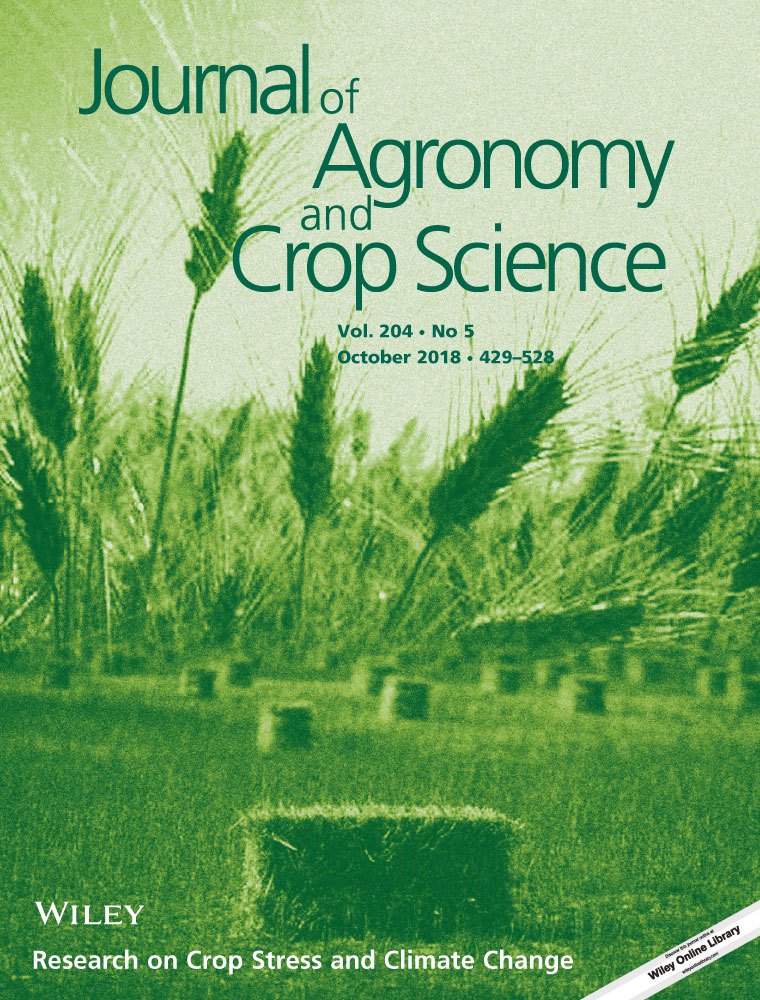Ver ítem
- xmlui.general.dspace_homeCentros e Institutos de InvestigaciónCIAP. Centro de Investigaciones AgropecuariasInstituto de Fisiología y Recursos Genéticos VegetalesArtículos científicosxmlui.ArtifactBrowser.ItemViewer.trail
- Inicio
- Centros e Institutos de Investigación
- CIAP. Centro de Investigaciones Agropecuarias
- Instituto de Fisiología y Recursos Genéticos Vegetales
- Artículos científicos
- Ver ítem
Physiological and anatomical traits associated with tolerance to long‐term partial submergence stress in the Lotus genus: responses of forage species, a model and an interspecific hybrid
Resumen
Cattle production based on natural pastures is often subject to flooding periods, which affect plant performance and as a result, forage production. Although most forage legumes are not tolerant to flooding, Lotus spp. are outstanding alternatives, since species, such as L. tenuis (Lt) and L. corniculatus (LcT), have high forage quality and are adaptable to different environments. We recently obtained a L. tenuis × L. corniculatus hybrid (LtxLc) with
[ver mas...]
Cattle production based on natural pastures is often subject to flooding periods, which affect plant performance and as a result, forage production. Although most forage legumes are not tolerant to flooding, Lotus spp. are outstanding alternatives, since species, such as L. tenuis (Lt) and L. corniculatus (LcT), have high forage quality and are adaptable to different environments. We recently obtained a L. tenuis × L. corniculatus hybrid (LtxLc) with potential new cultivar traits, although its tolerance to flooding stress has not yet been evaluated. In the present study, the performance of LtxLc, its parental diploid accessions, the model legume L. japonicus and tetraploid LcT were evaluated under 55 days of partial submergence stress and a 35‐day recovery period. Physiological, morphological and anatomical traits were analysed, showing that tolerance to partial submergence was positively associated with aerenchyma and adventitious root formation and relative growth rates. Overall, Lt and LtxLc showed the best responses under stress and during the recovery period. Nevertheless, the higher forage value of LtxLc makes it recommendable for use in environments affected by flooding. Our results could be used as breeding criteria for the generation of new cultivars tolerant to partial submergence stress.
[Cerrar]

Autor
Antonelli, Cristian Javier;
Calzadilla, Pablo Ignacio;
Vilas, Juan Manuel;
Campestre, María Paula;
Escaray, Francisco José;
Ruiz, Oscar Adolfo;
Fuente
Journal of Agronomy and Crop Science First published: 06 September 2018
Fecha
2018-09
ISSN
0931-2250
1439-037X
1439-037X
Formato
pdf
Tipo de documento
artículo
Palabras Claves
Derechos de acceso
Restringido
 Excepto donde se diga explicitamente, este item se publica bajo la siguiente descripción: Creative Commons Attribution-NonCommercial-ShareAlike 2.5 Unported (CC BY-NC-SA 2.5)
Excepto donde se diga explicitamente, este item se publica bajo la siguiente descripción: Creative Commons Attribution-NonCommercial-ShareAlike 2.5 Unported (CC BY-NC-SA 2.5)

